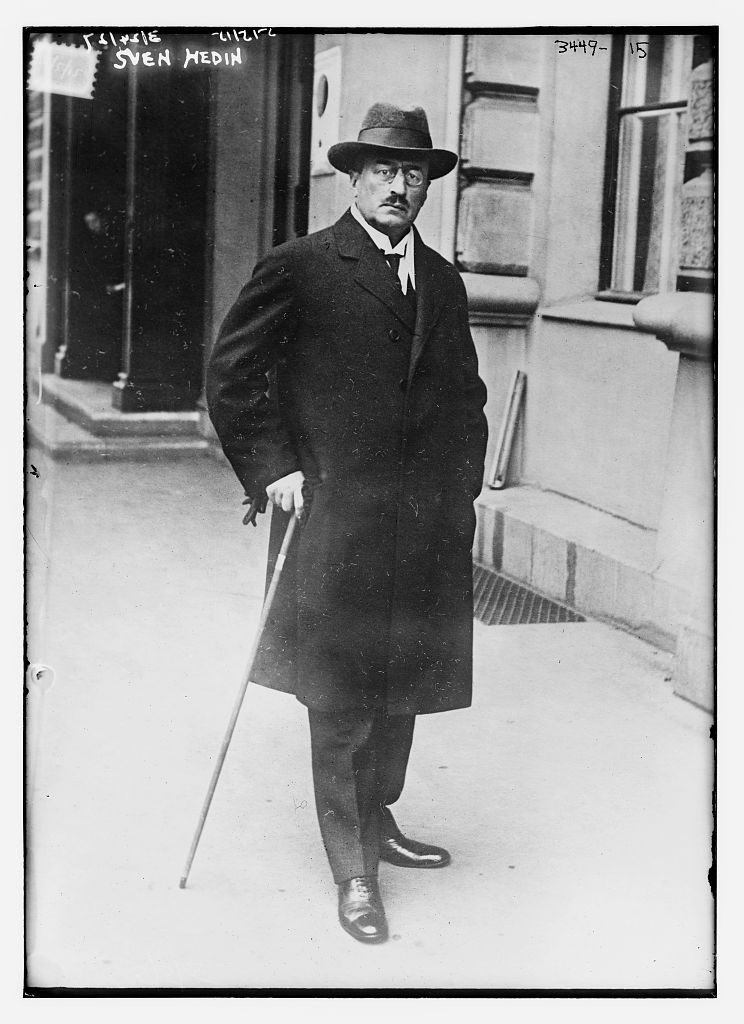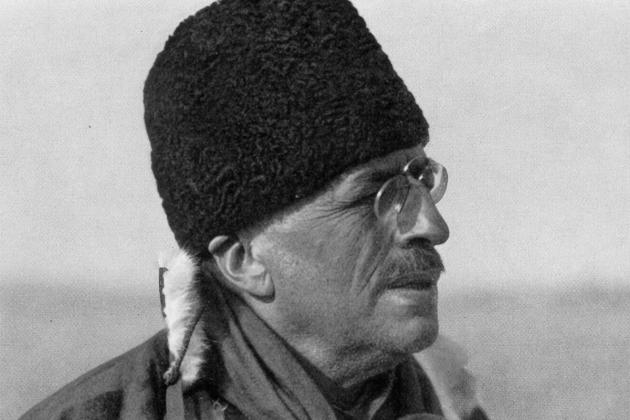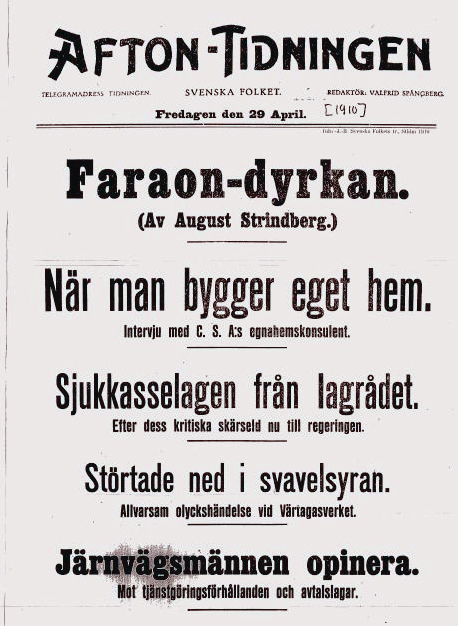Swedish History: January 17
Swedish explorer Sven Hedin returns to Sweden in 1909 after several years and three expeditions into central Asia and Tibet.
-
 On January 17 in 1909, Swedish explorer Sven Hedin returns to Sweden from a trip to Asia and is honored with a ceremony. It was to take several years before Hedin went on another big journey again.
On January 17 in 1909, Swedish explorer Sven Hedin returns to Sweden from a trip to Asia and is honored with a ceremony. It was to take several years before Hedin went on another big journey again. -
-
January 17 In Swedish History
1909: Swedish explorer Sven Hedin returns to Sweden from his latest trip to Asia, and is received with great pomp. SVT has released a film through Stockholmskällan about his return: Sven Hedin kommer hem efter Tibetexpedition
Hedin's early expeditions between 1893 and 1908 made him one of Sweden’s most important personalities, knighted by King Oscar II upon conclusion of his second expedition in 1902. Hedin became the last Swede (so far) to be raised to the untitled nobility. Apart from a shorter trip to the Mediterranean and Iraq in 1916, he doesn’t go on expeditions again until the end of the 1920’s. Instead he gets involved in Swedish politics.
His last trip, between 1927 and 1935 was largely financed by Germany and Lufthansa and Hedin was later to become a controversial figure due to his German sympathies. While he was indeed and strangely an admirer of Hitler, Hedin was also instrumental in saving several jewish families from being interned in Germany. His mostly admiring book on Germany of the 1930s ("Tyskland och Världsfreden" | "Germany and the World peace" 1937) became banned in Germany due to his critical views on for instance the persecution of jews.
Sven Hedin (1865-1952) was a geographer, topographer, explorer, photographer, travel writer and illustrator of his own works. During four expeditions to Central Asia, he discovered the Transhimalaya (once named the Hedin Range in his honor) and the sources of the Brahmaputra, Indus and Sutlej Rivers, Lake Lop Nur, and the remains of cities, grave sites and the Great Wall of China in the deserts of the Tarim Basin. In his book "Från Pol till Pol" (From Pole to Pole), Hedin describes a journey through Asia and Europe between the late 1880’s and early 1900’s. While traveling, Hedin visited Constantinopole (Istanbul), oil-rich Azerbaijan, Teheran, Mesopotamia (today’s Iraq), lands of the Kyrgyz people, India, China, Asiatic Russia and Japan. The posthumous publication of his “Central Asia Atlas” marked the conclusion of his life’s work. -
 Hedin's scientific reputation was without doubt damaged by his political involvement...
Hedin's scientific reputation was without doubt damaged by his political involvement... -
-
If you're curious about the explorer, we found a silent movie about his travels in the Gobi Desert of China here: http://www.youtube.com/watch?v=tivnfmKKmG4
-
 ..and Strindberg's hostility was quite possibly spurred by the same. Here the front page of the article in Afton-Tidningen that kicked off the two-year-long Strindberg feud in Sweden in 1910.
..and Strindberg's hostility was quite possibly spurred by the same. Here the front page of the article in Afton-Tidningen that kicked off the two-year-long Strindberg feud in Sweden in 1910. -
Not everyone was impressed by his discoveries. Swedish author August Strindberg started up the so-called "Strindbergsfejden" [the Strindberg feud] with an article in Afton-Tidningen in 1910, which for instance included this paragraph on Hedin:
Hedin har beskrivit sandhögar i oändlighet och kartlagt bergknallar, vilka alltid varit kända, ehuru ingen brytt sig om att kartlägga dem. Och alla bergknallar äro vattendelare, av den naturliga orsak, att vatten rinner nedåt bergen och icke uppåt. En vanlig lantmätare, väl utrustad, skulle utan pittoreska äventyr ha utfört Hedins kartarbeten, men hans namn skulle aldrig trängt längre än till Lantmäterikontoret. Hedin reser dock som en okunnig lantmäteri-auskultant; han kan icke landets språk, är föga bevandrad i naturvetenskaperna, litet i antikviteterna och historien. Hans stora svenska föregångare Strahlenberg kunde allt detta, och hans enda kvartband innehåller mer än Hedins alla kvarter som kostat nationen mer än hundra tusen kronor.
[Hedin has described an eternal amount of piles of sand and mapped hill sides, which were already known although no one had bothered to map them. And all hill sides are natural watersheds, since water runs down the mountain and not up. A common surveyor, well equipped could have done the cartography of Hedin without the quaint adventures but his name would not have reached beyond the local office of cartography. Hedin, however travails as an uneducated surveyor's apprentice; with no knowledge of the country's language, little versed in the natural sciences, little in history and the antiques. His grand predecessor Strahlenberg knew all these things and his only book contains more than Hedin's all books together, which cost the nation over one hundred thousand crowns.] — renowned Swedish author and artist August Strindberg (1849-1912) -
-
